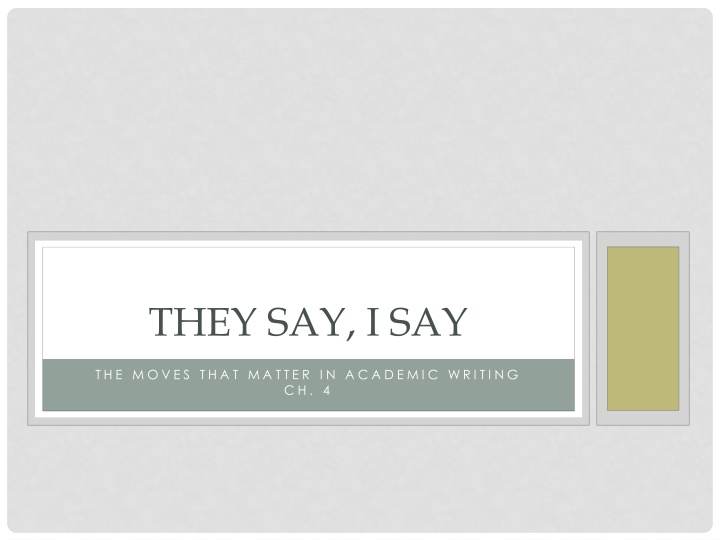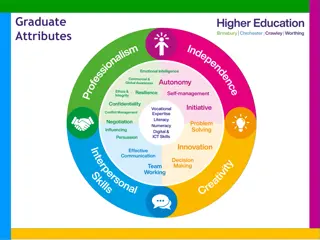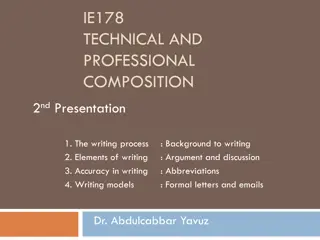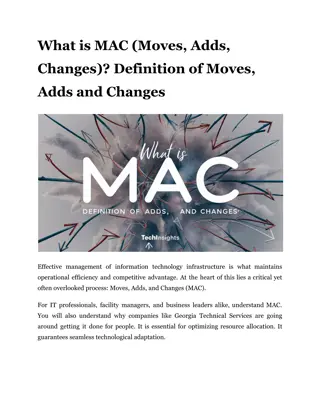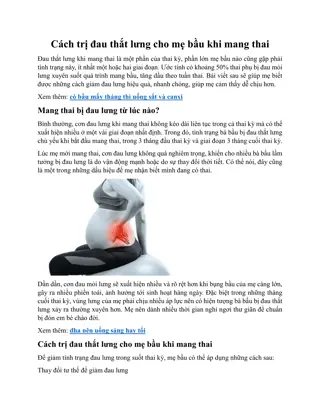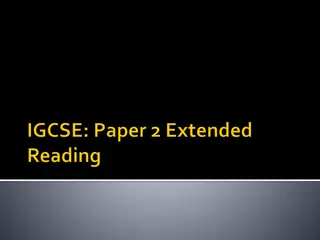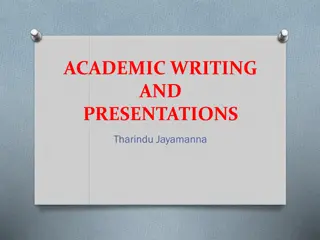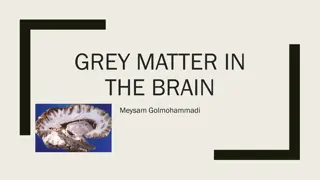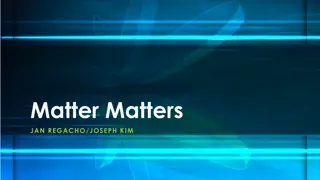Mastering Academic Writing: Moves that Matter in Response
In the academic writing realm, transitioning to the "I Say" stage can seem daunting, but it's crucial for building effective arguments. This stage focuses on three key ways to respond - agreeing, disagreeing, or sharing mixed opinions. It emphasizes the importance of clear and direct responses to engage readers effectively. Additionally, the strategy of disagreeing and providing persuasive reasoning is discussed, highlighting the significance of adding value and depth to arguments.
Download Presentation

Please find below an Image/Link to download the presentation.
The content on the website is provided AS IS for your information and personal use only. It may not be sold, licensed, or shared on other websites without obtaining consent from the author.If you encounter any issues during the download, it is possible that the publisher has removed the file from their server.
You are allowed to download the files provided on this website for personal or commercial use, subject to the condition that they are used lawfully. All files are the property of their respective owners.
The content on the website is provided AS IS for your information and personal use only. It may not be sold, licensed, or shared on other websites without obtaining consent from the author.
E N D
Presentation Transcript
THEY SAY, I SAY T H E M O V E S T H A T M A T T E R I N A C A D E M I C WR I T I N G C H . 4
CH. 4: YES/NO/OKAY, BUT THREE WAYS TO RESPOND This is the beginning of I Say, whereas Ch. 1-3 were focused on They Say. Our authors note that Moving to the I Say stage can be daunting in academia, where it often may seem that you need to be an expert in a field to have an argument at all (55). The truth is that you need to realize that good arguments are based not on knowledge that only a special class of experts has access to, but on everyday habits of mind that can be isolated, identified, and used by almost anyone (55-6).
YOU CAN RESPOND Though one may not always be an expert, successful arguments are built on basic rhetorical patterns that most of us use on a daily basis (56). We are going to look at the 3 most common ways to respond.
ONLY THREE WAYS TO RESPOND? 3 categories of responses seems odd Remember your readers attention, this is why you may find that keeping it simple in approach can be useful The authors point out that It is always a good tactic to begin your response not by launching directly into a mass of details but by stating clearly whether you agree, disagree, or both, using a direct, no-nonsense formula (57). Say things like: I agree, I disagree, or I am of two minds. I agree that , but I cannot agree that . (57) After using one of these responses, you can move towards the complications of your argument now that you have your audience s firm attention
DISAGREE AND EXPLAIN WHY Seems like a simpler move than most Often associated with critical thinking: Questioning, which can be the easiest way to start off an essay There are hidden challenges You need to do more than simply assert that you disagree with a particular view (58). you also have to offer persuasive reasons why you disagree (58).
MORE THAN SIMPLY SAYING NOT Example from the text Although they say women s rights are improving, I say women s rights are not improving. This response simply contradicts the view its disagreeing with and fails to add anything interesting and new (59). The argument above is not an argument, for it to be one you need to be support what you have to say (59). You need to show that you are adding something to the argument, you need to demonstrate that you have something to contribute (59).
USING THE DUH METHOD This method uses the idea that you disagree not with the position of itself but with the assumption that it is a new or stunning revelation (59). Example According to a recent report by some researchers at Stanford University, high school students with college aspirations often lack crucial information on applying to college and on succeeding academically once they get there. Well, duh It shouldn t take a Stanford research team to tell us that when it comes to succeeding academically, many students don t have a clue. - Gerald Graff, Trickle-Down Obfuscation
TEMPLATES FOR DISAGREEING, WITH REASONS X is mistaken because she overlooks recent fossil discoveries in the South. X s claim that that rests upon the questionable assumption . I disagree with X s view that research has shown, because, as recent . X contradicts herself/can t have it both ways. On the one hand, she argues . On the other hand, she also says . By focusing on . , X overlooks the deeper problems of
DISAGREEING WITH A TWIST This is called the twist it move. This is where you agree with the evidence that someone else has presented but show through a twist of logic that this evidence actually supports your own, contrary position (60).
EXAMPLE OF A TWIST IT X argues for stricter gun control legislation, saying that the crime rate is on the rise and that we need to restrict the circulation of guns. I agree that the crime rate is on the rise, but that s precisely why I oppose stricter gun control legislation. We need to own guns to protect ourselves against criminals (60). The twist it move comes from the way that X claims that the crime rate is on the rise but then argues that this increasing crime rate is in fact a valid reason for opposing gun control legislation (60).
REASONS TO HESITATE TO DISAGREE 1. Not wanting to be unpleasant 2. Not wanting to hurt someone s feelings 3. Not to make yourself vulnerable to being disagreed with in return Though we can be fearful of confrontation but simply ignoring a disagreement doesn t make it go away. The key is that its not a put down, there is a respectful way of doing it
AGREE BUT WITH A DIFFERENCE Its less than simple, like disagreeing You need to do more than simply echo views you agree with it s important to bring something new and fresh to the table, adding something that make you a valuable participant in the conversation (61). There are moves that enable you to contribute something of your own to a conversation even as you agree with what someone else has said (61). 1. 2. You can point out something that has gone unnoticed You can cite a personal experience that ties in What s is ultimately important is to provide some difference and contrast between what you are agreeing with and your view there still needs to be distinction
TEMPLATES FOR AGREEING I agree that diversity in the student body is educationally valuable because my experience at Central University confirms it. X s theory of the difficult problem of is extremely useful because it sheds light on . X is surely right about aware, recent studies have show that . because, as she may not be Those unfamiliar with this school of thought may be interested to know that it basically boils down to .
ISSUES WITH AGREEING It s okay to agree, but make sure that you try to be your own person, avoid being unoriginal Remember that if you are agreeing with one person, you are disagreeing with another Example: These findings join a growing convergence of evidence across the human sciences leading to a revolutionary shift in consciousness If cooperation, typically associated with altruism and self-sacrifice, sets off the same signals of delight as pleasures commonly associated with hedonism and self-indulgence; if the opposition between selfish and selfless, self vs. relationship biologically makes no sense, then a new paradigm is necessary to reframe the very terms of the conversation. - Carol Gilligan, Sisterhood Is Pleasurable: A Quiet Revolution in Psychology
GILLIGANS POINT Boiled down, Gilligan is saying: I agree that many people still believe , a point that needs emphasizing since so . If group X is right that need to reassess the popular assumption that , as I think they are, then we . The point of these templates [is to] allow you to do, then, is to agree with one view while challenging another a move that leads into the domain of agreeing and disagreeing simultaneously (64).
AGREEING AND DISAGREE SIMULTANEOUSLY This is the authors favorite way of responding, for them it helps us get beyond the kind of is too / is not exchanges that often characterize the disputes of young children and the more polarized shouting matches of talk radio and TV (64).
TEMPLATES FOR AGREEING AND DISAGREEING SIMULTANEOUSLY Although I agree with X up to a point, I cannot accept his overriding assumption that religion is no longer a major force today. Although I disagree with much that X says, I fully endorse his final conclusion that .
AGREEING AND DISAGREEING TEMPLATES CONTINUED Though I concede that . , I still insist that X is right that when she claims that , but she seems on more dubious ground . While X is probably wrong when she claims that that . , she is right Whereas X provides ample evidence that research on instead. , Y and Z s and convinces me that
ANOTHER WAY, IM OF TWO MINDS I m of two minds about X s claim that hand, I agree that . . On the one . On the other hand, I m not sure if My feelings on the issue are mixed. I do support X s position that , but I find Y s argument about to be equally persuasive. and Z s research on
IS BEING UNDECIDED IS OKAY? Many authors worry about expressing indecision, ambivalence, about an issue as much as agreeing or disagreeing this can lead to confusion in the reader According to our authors, At other times, however, acknowledging that a clear-cut resolution of an issue is impossible can demonstrate your sophistication as a writer (67).
CH. 4 - EXERCISES I want you to read Agonism in the Academy: Surviving the Argument Culture by Deborah Tannen. Find it here: http://www9.georgetown.edu/faculty/tannend/chro nicle033100.htm
